James Bowman, 65 Jamaica St., 1855 - 1886
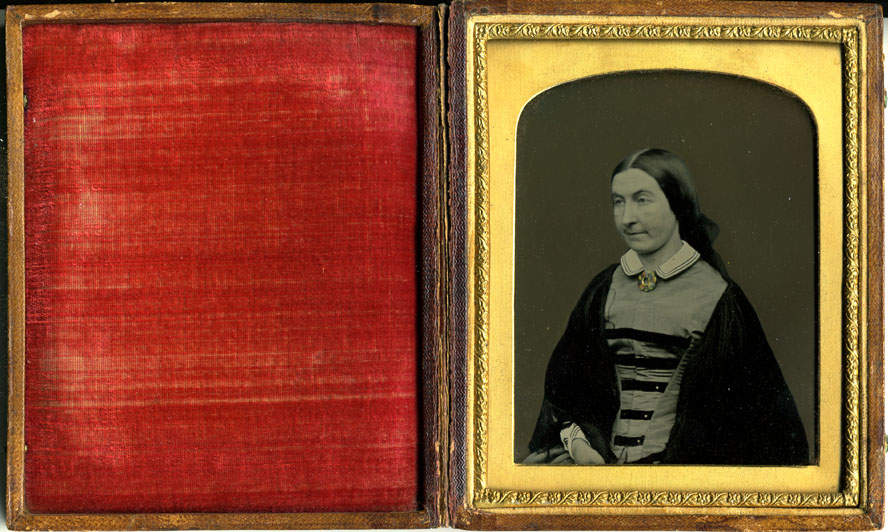

This first example of Mr Bowman's work is an encased quarter plate ambrotype of a type produced between 1855 and the early 1860s. Full plate size was 16.5 x 21.5 cms approximately, but quarter plate, (8 x 11 cms approx.) and ninth plate (5 x 6 cms approx.) were more common. The broach, face and hands have been delicated tinted by paint applied directly to the glass, and the background has been painted out. The centre parting, with hair covering the ears, is characteristic of the 1850s and very early 1860s. James Bowman does not seem to have been related to the photographer Andrew Bowman, who had premises almost opposite him at 74 Jamaica St. (see photographs in the 'Other Interest' section).
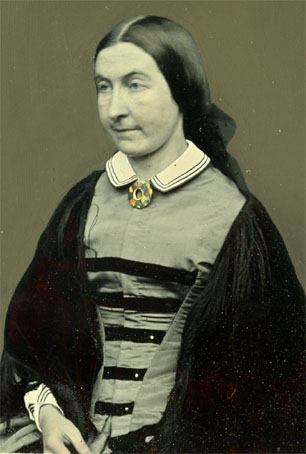
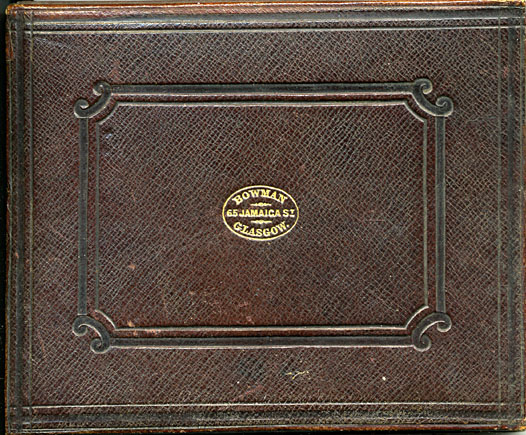
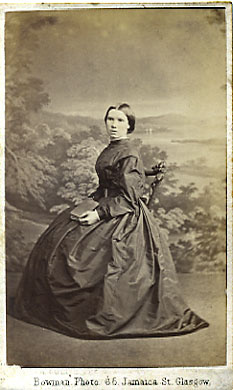
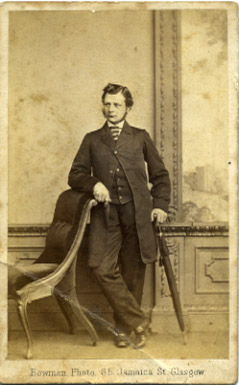
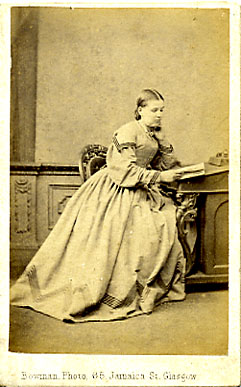
These next examples of James's work above are cdvs, and come from the early 1860s. The three have the same font on the front, and are blank on the back, and are on progressively thicker (0.013", 0.016", 0.021") and broader (6.25, 6.38, 6.44cm) card. There seems to be a slight radius on the corner of the second and third cards. While the centre partings remain, ears are seen to be emerging!
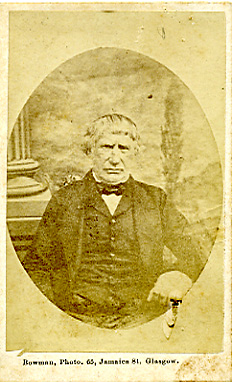
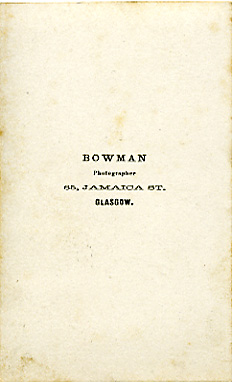
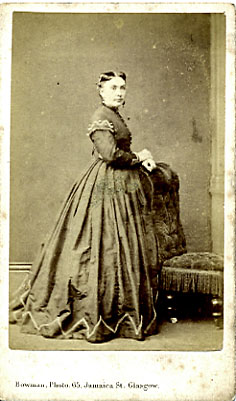
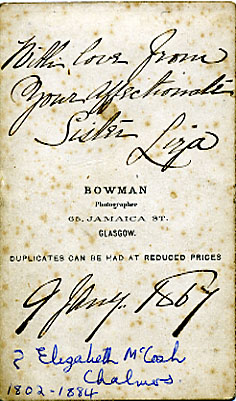
These next two above share the same font on the front, and also have the name and address on the back, and could again have come from the earliest 1860s. The date on the second is believed to be 1861. The remark about extra copies shows that a negative process was being used.
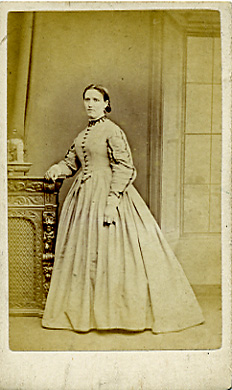
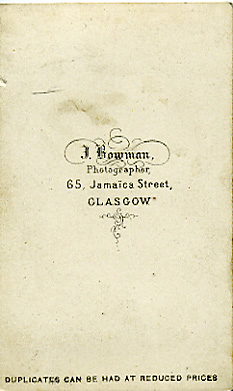
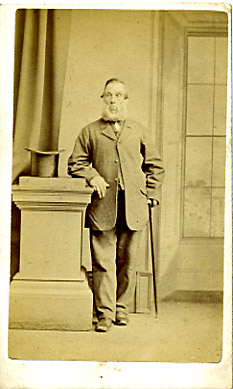
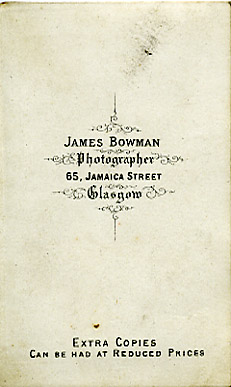
On stylistic grounds the cdvs immediately above and below could all come from the mid 1860s, and an attempt has been made to present them chronologically, but the disposition is not certain. Perhaps the gentleman below should be earlier. The form with the monogram below is known from 1866.
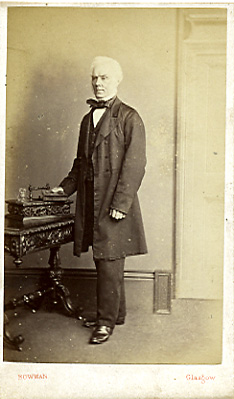
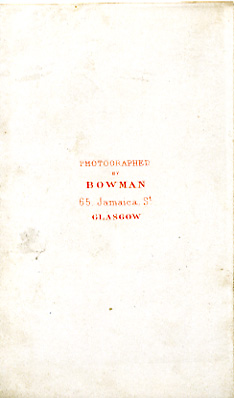
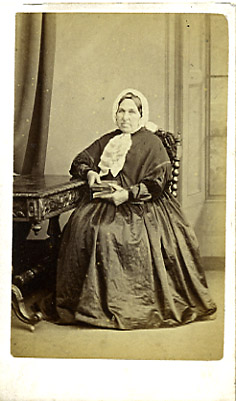
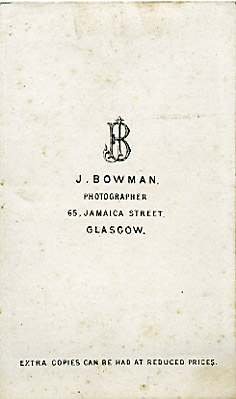
The cdv below with the clear, well preserved image is on thicker card, similar to those below it, and could be from the late 1860s, though this is not certain. The design on the back is upside down in relation to the image on the front.
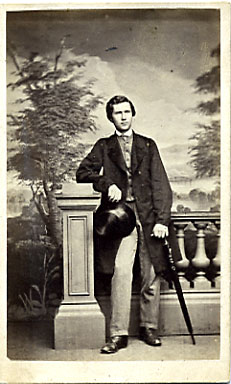
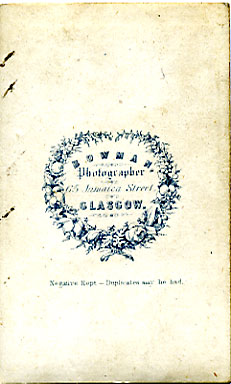
In the cdvs below Bowman has adopted one version of the Glasgow coat of arms, and
the first of these is likely to be from the early 1870s. The use of a large diagonal font as in the second
and subsequent examples started in the mid 1870s.
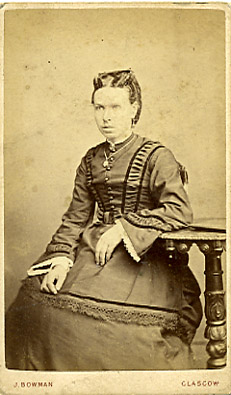
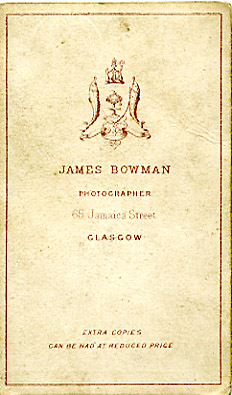
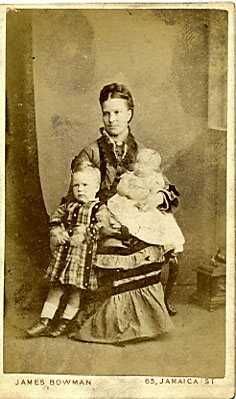
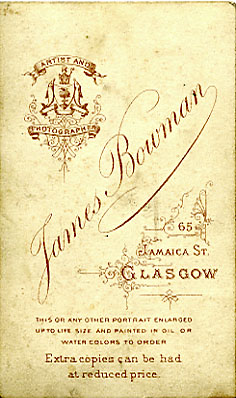
The two cdvs below show a transition from plain to gilt edges, and from matt to glossy card. The text on the second is gold coloured. They are difficult to date precisely, but would come from between 1875 and 1885, when the closer approach of the camera was common. An example of the first is known dated to 1879.
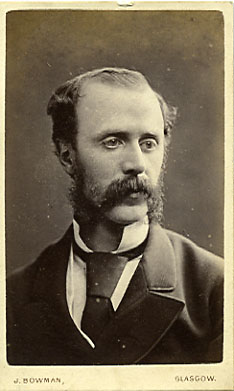
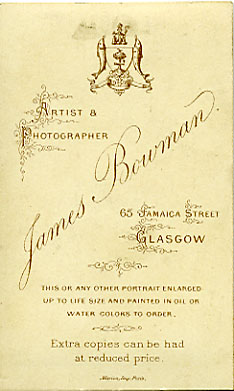
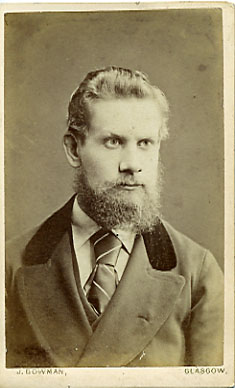
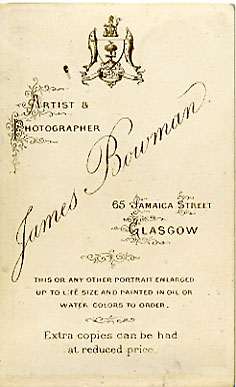
The cabinet card below shares the same central design as the cdvs above and below, so it is difficult to narrow the date range, particularly since the bottom has been trimmed off, removing any possible name of the printer.
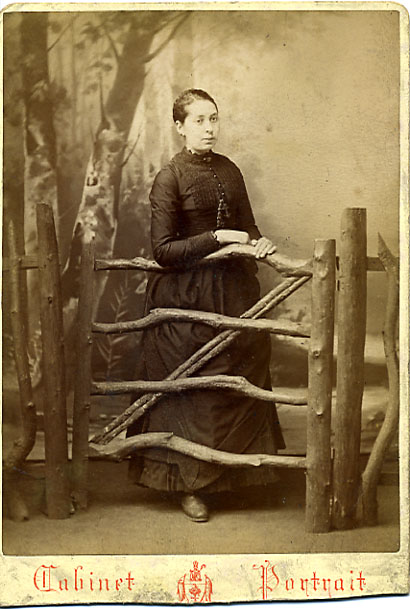
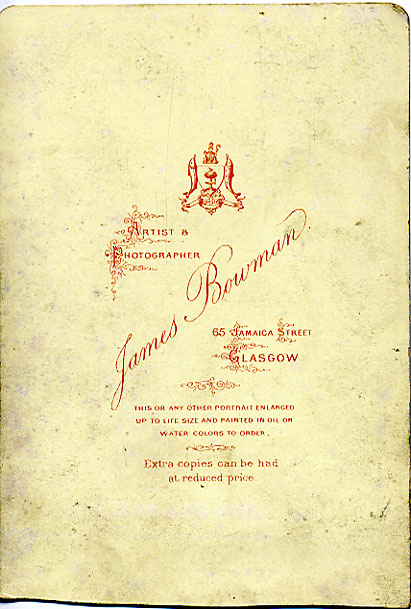
The cdvs below are on thick (0.029" and 0.032") matt card, the second produced by the Glasgow printer George Mason, which puts it into the 1880s. The design of these cards, which must have been used for about ten years, is the same as used by Andrew Bowman in the same period. The closer framing of these later examples is characteristic of the period.